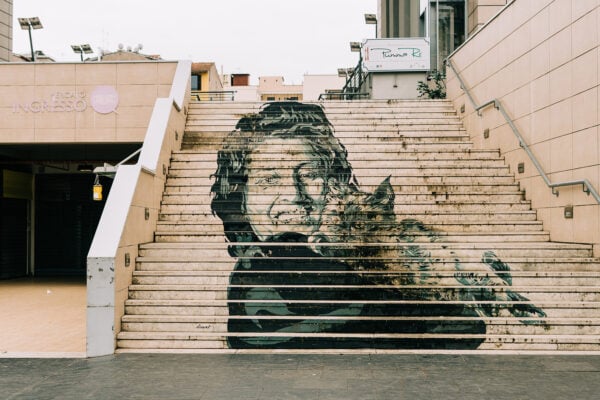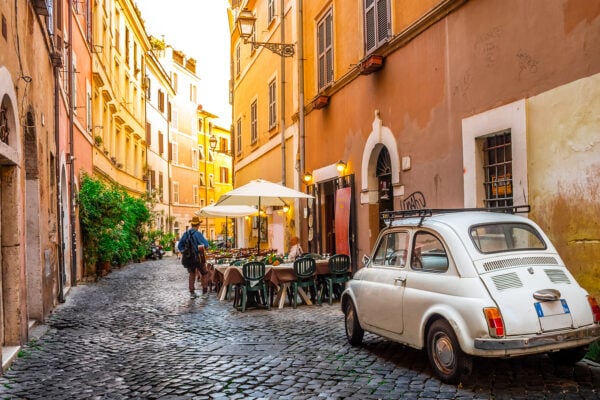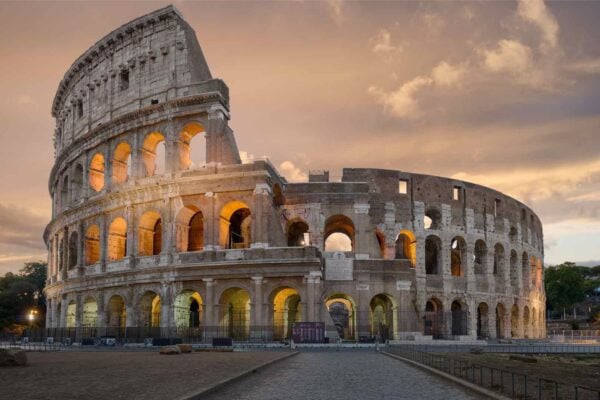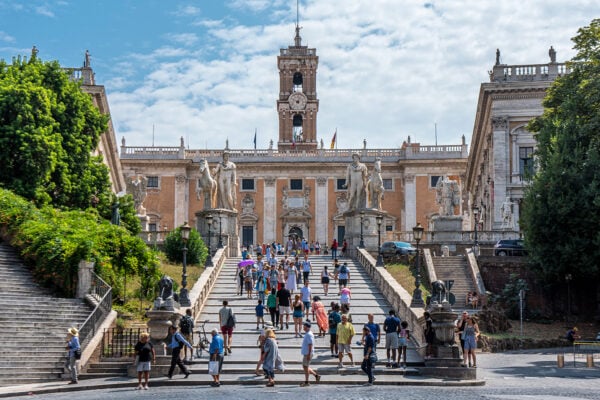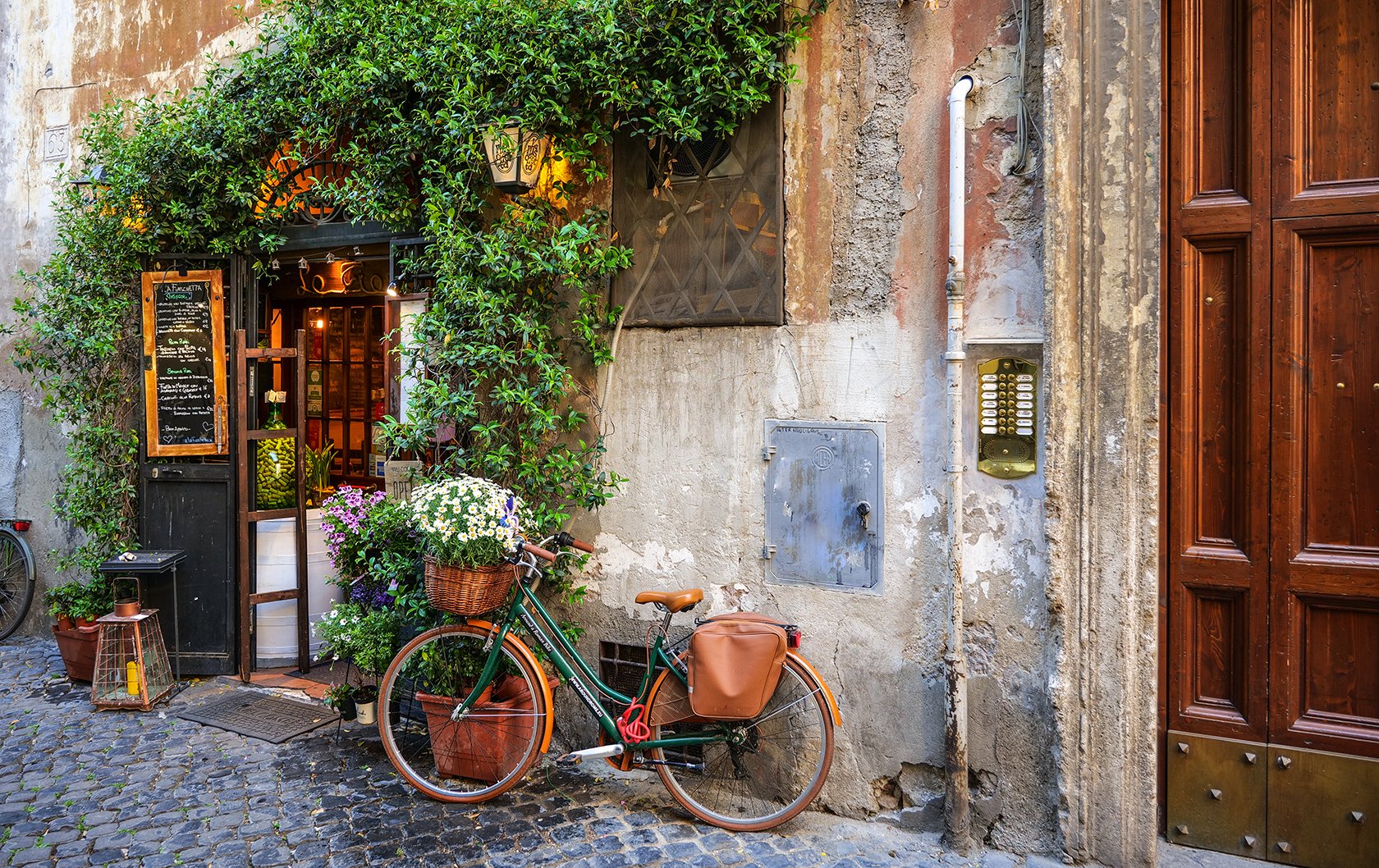
A classic Italian scene in Trastevere
Trastevere is one of those Roman neighborhoods that live up to all of the superlatives and cliches. Ivy-draped ochre buildings. Check. Narrow cobblestones streets. Check. Piazzas, markets and cafes filled with locals. Check. Even if it is only for a few days, you can live like a local with our Trastevere neighborhood guide.
Trastevere is a popular area with tourists and locals alike and it’s easy to see why. This fun and lively neighborhood dates back to the earliest days in Rome. It’s located across the river from Imperial Rome and was originally an Etruscan settlement. For much of its history, this area wasn’t considered a part of the city and that created a fierce sense of identity that is still evident today. There is even the much-loved annual Festa de’ Noantri (Festival of Us) that blends sacred and profane as it brings together residents to celebrate every July. While many travelers head to Trastevere for the restaurants, lively atmosphere and artisan shops, read on to discover more about this fascinating Roman neighborhood.
Bookmark this Trastevere neighborhood guide for your next trip to Rome. We hope you’ll be exploring the cobblestone streets of the Eternal City very soon! Contact us and our team will help you find the perfect apartment rental in Rome.
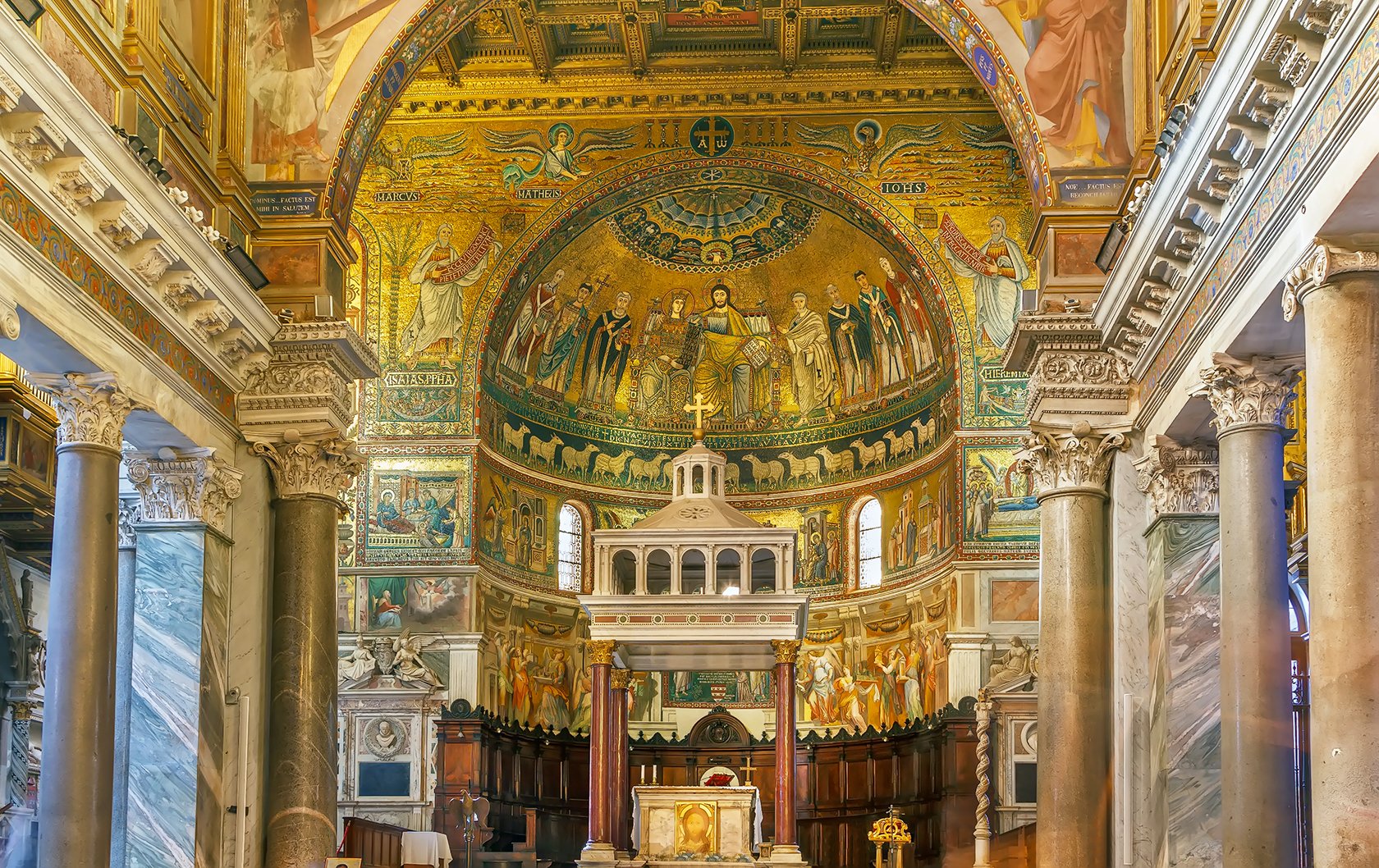
The remarkable mosaics in the Basilica of Santa Maria in Trastevere
What to See and Do in Trastevere
The perfect place to begin exploring the neighborhood is Piazza di Santa Maria in Trastevere where the grand Basilica of Santa Maria in Trastevere dominates the charming square with its central fountain that is among the oldest in Rome. Once the site of Rome’s earliest Christian worship, the interior is a study in beautiful excess. The multicolored floors were laid in the 12th century and the Pietro Cavallini mosaics from the late 13th century in the apse dazzle.
Just around the corner, the small permanent collection in the Museo di Roma in Trastevere is dedicated to popular life in Rome from the late 18th century to the early 20th century. It includes personal belongings of the great Roman poet Trilussa (1871-1950) in addition to 19th-century paintings depicting Roman life. There are often contemporary photography exhibits here as well.
Walk along the Via della Lungara in the direction of Vatican City to both the Galleria Corsini and Villa Farnesina. The private collection of Prince Tommaso Corsini was donated to the state and what you see displayed inside the Palazzo Corsini is exactly as it was in the late 1700s. Works include paintings by Caravaggio, Van Dyck and Guido Reni. Cross the street to the Villa Farnesina to see frescoes by Raphael in a palace that dates back to the Roman empire and was home to the wealthy Siena banker Agostino Chigi. Raphael’s fresco of the Triumph of Galatea is a masterpiece and there are many more works created by Raphael and his workshop in the Loggia of Cupid and Psyche.
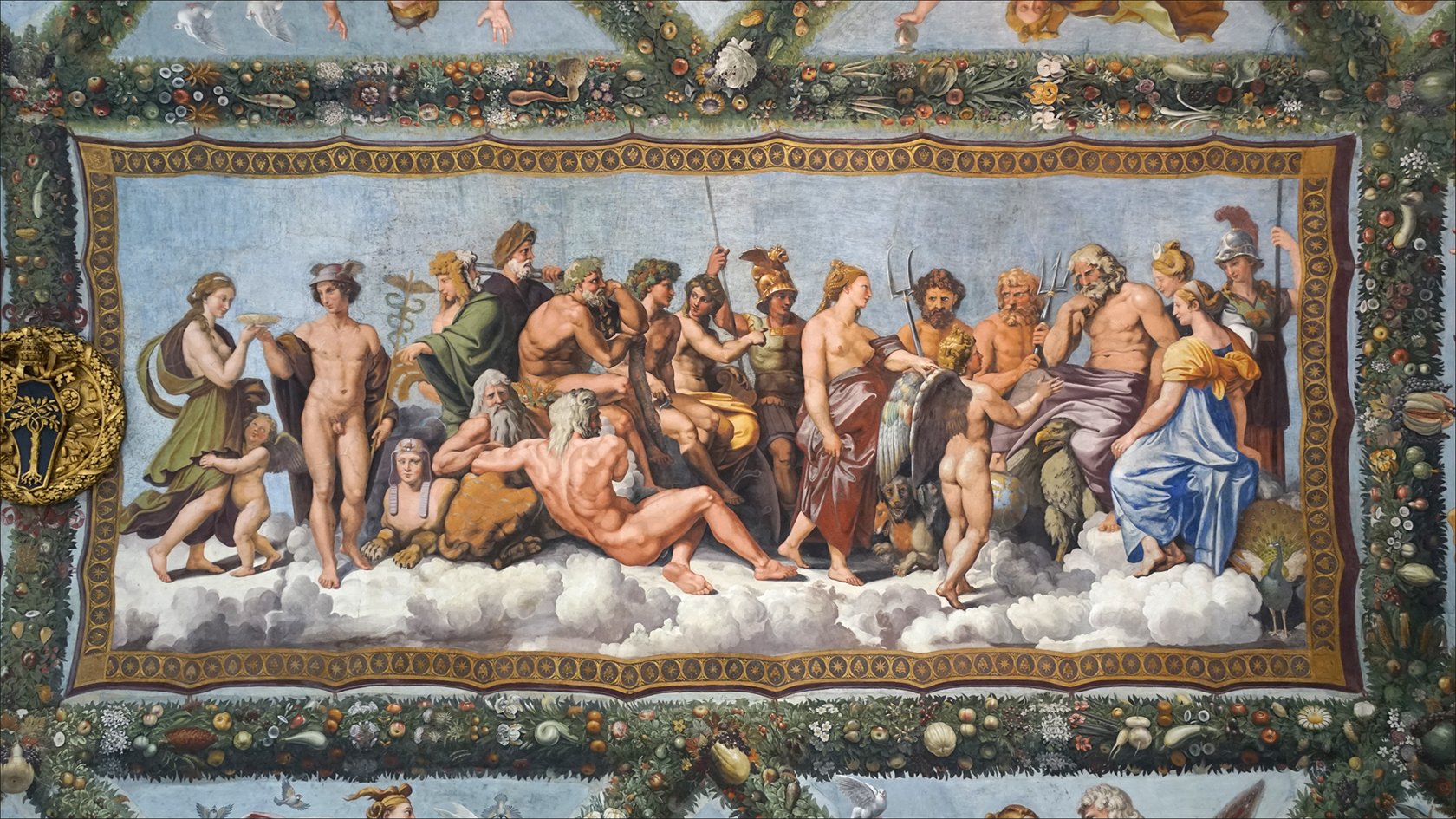
Frecoes by the school of Raphael in the Loggia of Cupid and Psyche at Villa Farnesina (credit)
Explore the botanical gardens that were once the private gardens for Palazzo Corsini. Today it’s an oasis of calm and green that’s ideal for a moment of relax while sightseeing. The gardens are especially lovely in the spring and we particularly enjoy the peaceful Japanese garden anytime of the year.
Just across Ponte Cestio, a particularly photogenic ancient Roman bridge, you’ll find the Isola Tiberina (Tiber Island). The small island is the only one in the Tiber as it flows through Rome and is a great spot for strolling along the river.
While in the neighborhood, learn how to make all of the delicious pasta dishes you have been eating with a pasta-making class at Grano e Farina. If walking the cobblestones is not enough of a workout for you, take a yoga class or book a private Pilates session at Ryoga.
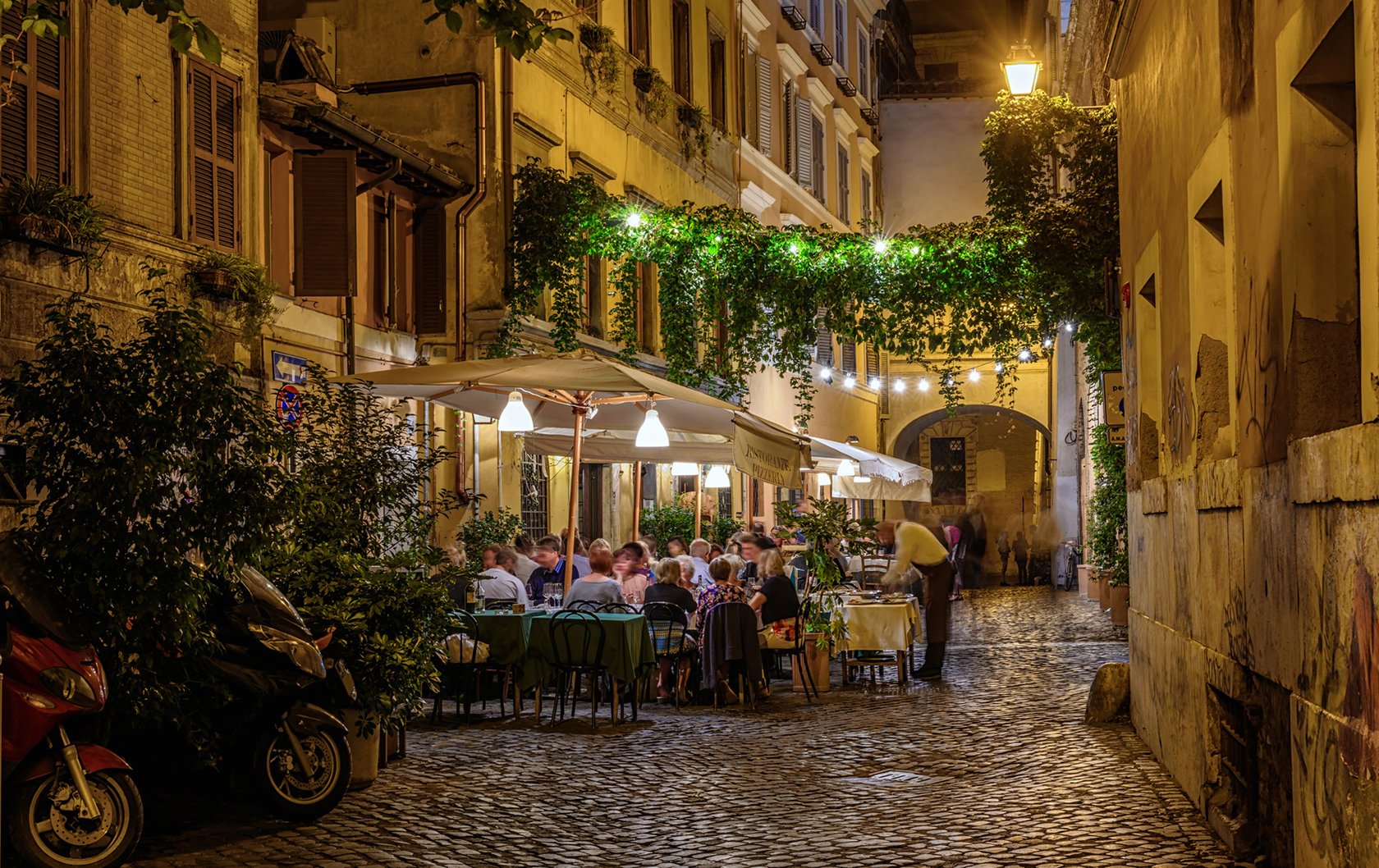
Outdoor dining in Trastevere
Eating and Drinking in Trastevere
While the charming labyrinth of streets in Trastevere can be peaceful during the day, it’s a vibrant atmosphere after dark. From your pre-dawn cappuccino to a very late night Negroni, there is always something open in Trastevere. These are some of our favorite addresses for coffee, pasta and gelato.
Bar San Calisto in Piazza di San Calisto is the soul of the neighborhood. Open from very early to very late, there is almost always a table filled with locals boisterously playing cards. In the morning there are pastries and the gelato is good and a no-frills Spritz or Negroni is an all-day offering.
The Roman-style pizzeria Ai Marmi at Viale Trastevere 53/59 opens at 6:30, early by Roman standards, which is a great thing if you have hungry kids. Make sure to order some fried zucchini flowers too.
The menu at Osteria der Belli, a Sardinian-Roman hybrid, leans heavily towards fresh seafood. Start with platters of sautéed mussels and swordfish carpaccio and move on to spaghetti alle vongole or grilled calamari. If you would like to cook at home in your Rome vacation rental apartment, the pasta shop down the street is owned by the same family.
Ma Che Siete Venuti a Fà is a popular local pub with 16 craft beers on tap. Swipe one of the few outside chairs with a view of Piazza Trilussa and have a glass of wine at the Enoteca Ferrara. Night owls will enjoy the scene with DJs and strong drinks at G Bar. The Trastevere branch of the mini-empire, Trapizzino has an incredible wine selection primarily from small Lazio producers.
Supplì, a breaded rice ball stuffed with cheese and/or meat and vegetables is a classic Roman snack. To try one or pick up something for dinner head to Supplì Roma, a small storefront with only a couple of high top tables.
Don’t get tricked by the bright lights and garish colors at many of the flashier gelato shops. Hunt out some superb gelato at both Otaleg and Fior di Luna. Both are small independent shops that rigorously source their ingredients and make their gelato on-site.
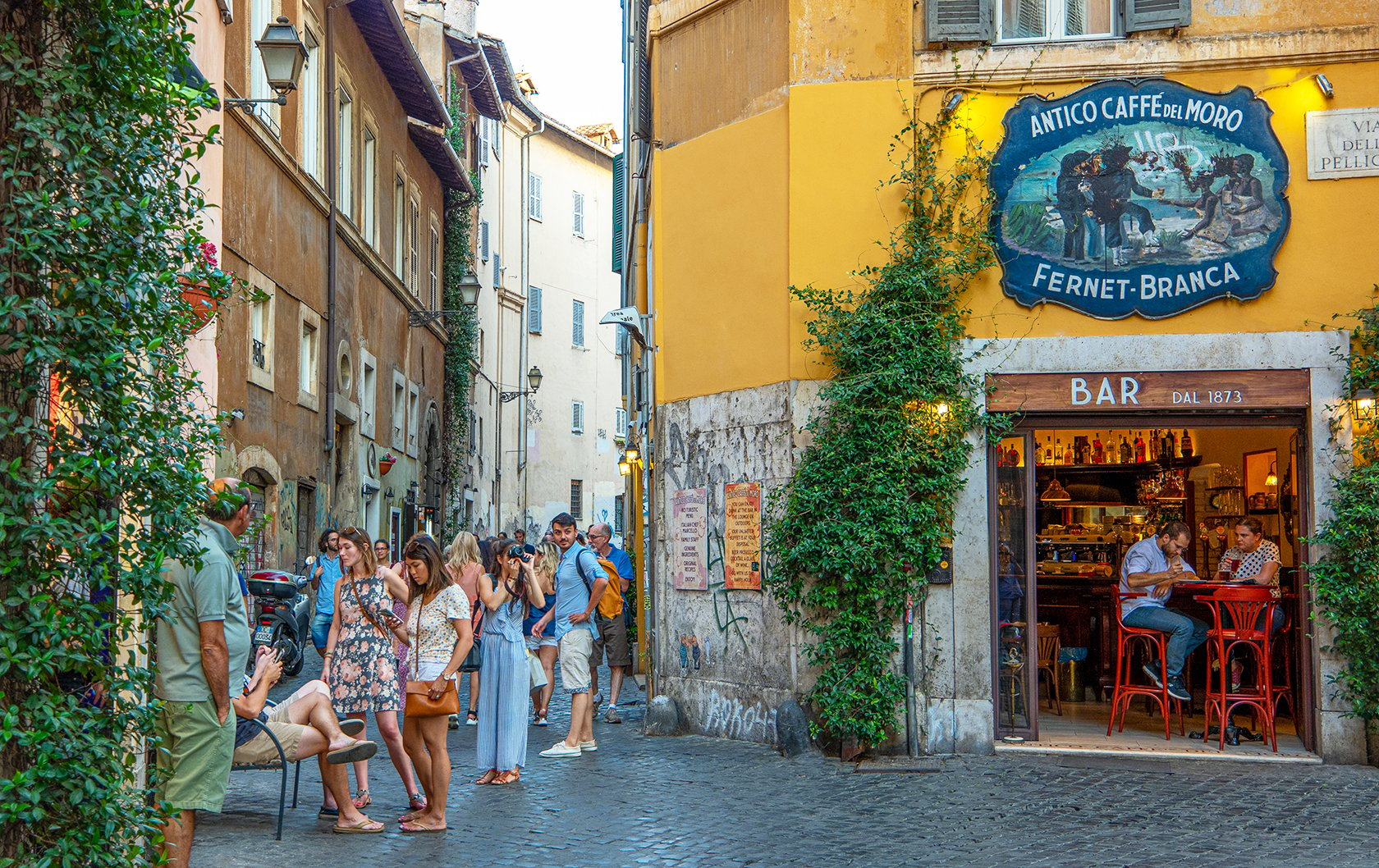
Trastevere is lovely for strolling
Shopping in Trastevere
Trastevere has a unique and somewhat eccentric vibe for shopping that we enjoy. Twice Vintage is a carefully edited collection of designer skirts, shoes, jackets and dresses. Anna Retico creates brightly colored jewelry from hand blown glass and translucent PVC. Teenagers will love the quirky Elvis Lives where they can shop for socks and t-shirts emblazoned with the only in Rome exhalation Daje.
From the most obscure label that produces scents of sea monsters to your favorite Dyptique candle Roma Store Profumi probably stocks it. Another reason to visit is the shop windows are a rotating art installation. Cereria Di Giorgio has been providing candles to many of Rome’s churches for more than 100 years. The store on Viale Trastevere is packed with every kind of candle you can imagine.
Trays of cookies are baked all day long and tantalizingly displayed in the window at the beloved historic shop Biscottificio Innocenti. A wax paper bag filled with anise-scented and jam-filled cookies from this family-owned bakery is a wonderful souvenir. Take our advice and buy twice as much as you think you need.
The daily food market in Piazza San Cosimato is worth a visit even if you don’t cook. This is a real market for the neighborhood and the stalls sell fresh produce, cheese and cured meats as well as a fish stand and a butcher. The market is open Monday to Saturdays from 6am to 1:30pm.
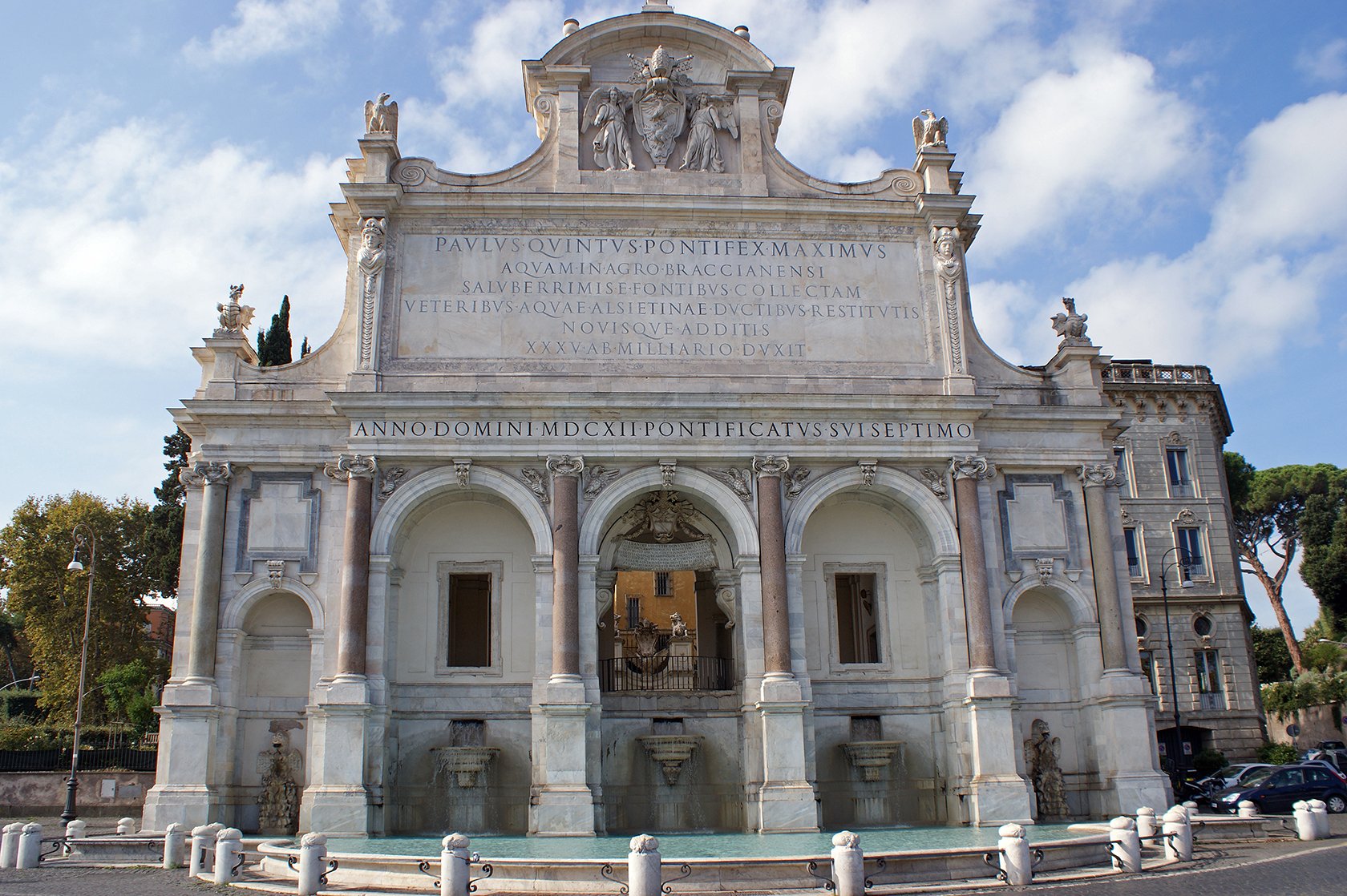
The impressive Fontana dell’ Acqua Paola (credit)
Beautiful Views of Rome from the Gianicolo
While meandering through Trastevere, enjoy a walk up to the Gianicolo (Janiculum), the second highest hill in Rome. From here you’ll savor one of the most captivating panoramas overlooking the city. Start out at the Fontana dell’Acqua Paola, also known as the Fontanone (big fountain), a massive marble fountain built in 1612. It was created as a monument to celebrate the end of the Acqua Paola and is named after Pope Paul V who restored the ancient Roman aqueduct. You’ll hear the water flowing before you arrive and it’s certainly an unexpectedly beautiful Roman spot.
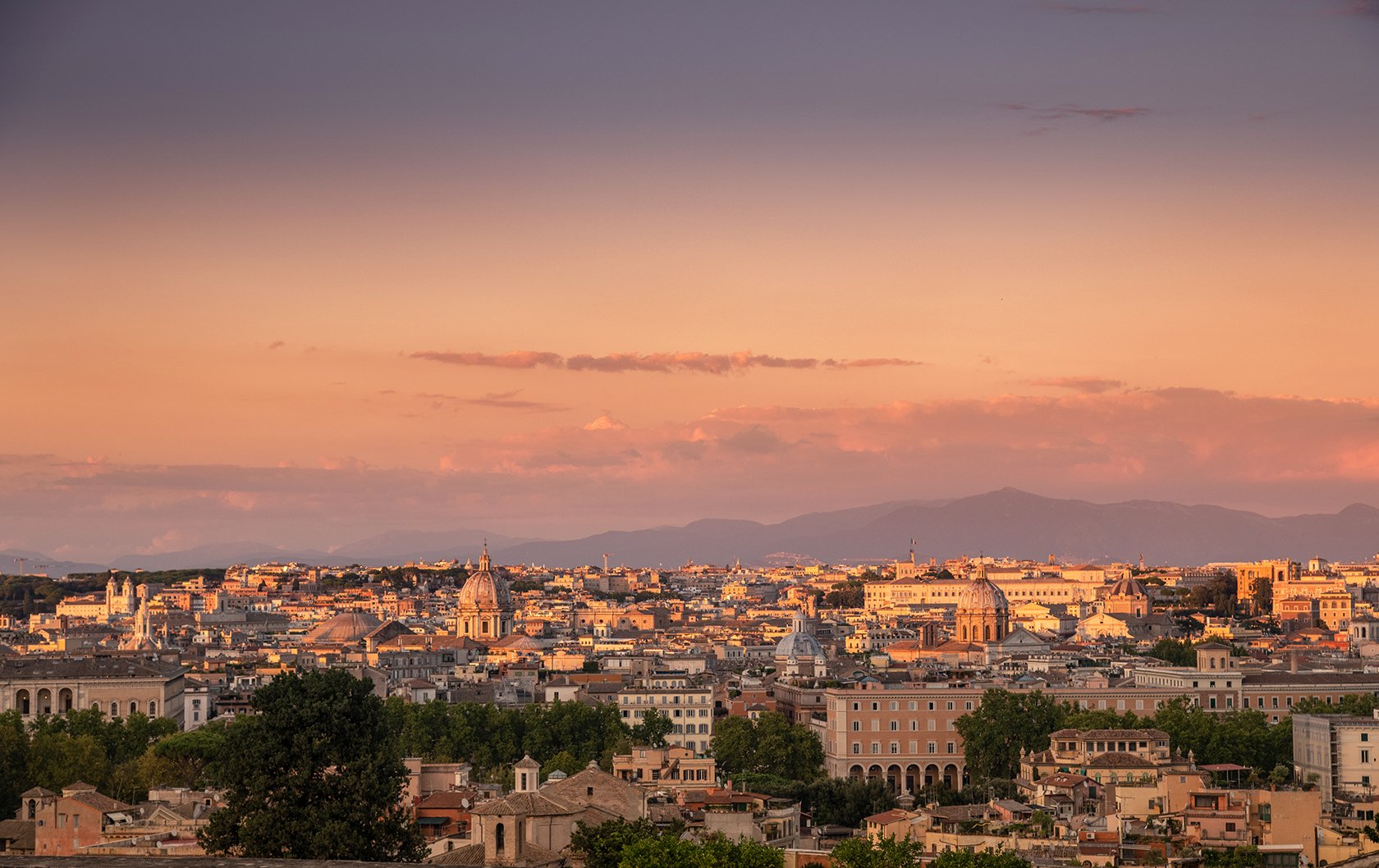
A stunning view over Rome from the Gianicolo hill at the sunset
For the best view on the Gianicolo, you’ll want to walk up to the Belvedere del Gianicolo. Not far from the Fontana dell’Acqua Paola, follow either one of the two Passeggiata del Gianicolo pathways from Via Garibaldi up to Piazzale Garibaldi where you’ll find the large monument to Giuseppe Garibaldi, the general who fought for the unification of Italy. Head to the overlook nearby for a sweeping view where you can spot all the key monuments and sites in Rome. If you find yourself at the belvedere at about noon, stay to watch the Cannone of Gianicolo that is fired every day from just below. The daily tradition started in 1847 when Pope Pio IX instituted it as a way to coordinate time around the city.
